AN interview with Jacky BOehm
“Wrought Evocations”
Creative Inspiration: Always changing. Currently, The Sugarcubes, Ines Longevial, Brooklyn facade ironwork, Monday mornings, eBay vintage search spirals.
To find more:
Socials: @snacky_jacky
Website: jackyboehm.com
Interviewed by Michael Frank and edited for clarity.
Jacky Boehm has been making art her entire life. Living in Brooklyn, she works as a graphic designer, art director, and painter. Her paintings often feel definitive, a specific outline jutting out of a colorful background, the viewer’s eye forced to look at this central shape. We chatted about parental support, the juxtaposition of technique and story, and the difficulty in her own personal process of addition by subtraction.
When did you start painting?
I’ve been making art and creating stuff forever. I would draw on my kitchen floor. I was interested in creating visuals with a story, which has progressed throughout my life. Did art in high school and digital illustration work in and after college. I wanted it to feel very vibrant and colorful. I started exploring more with shape and form, and did a lot with female figures, floral pieces, and so on.
This may sound like a weird question, but how did you find out that you have talent then? How do you personally discern quality?
Talent can mean taste. Anyone could be talented. Sometimes I think it’s the time you dedicate. Talent is directly related to time. Constantly learning from yourself and adapting and discovering a medium. Talent is a lifelong journey.
Do you think there’s something innate about it?
When I was younger, I had more of a knack to produce art, stuff that seemed “technically good.” But there’s so much more to it. My parents could’ve just been telling me what I wanted to hear, though. When you receive praise in certain areas, you want to keep developing that. So it can be a feedback loop.
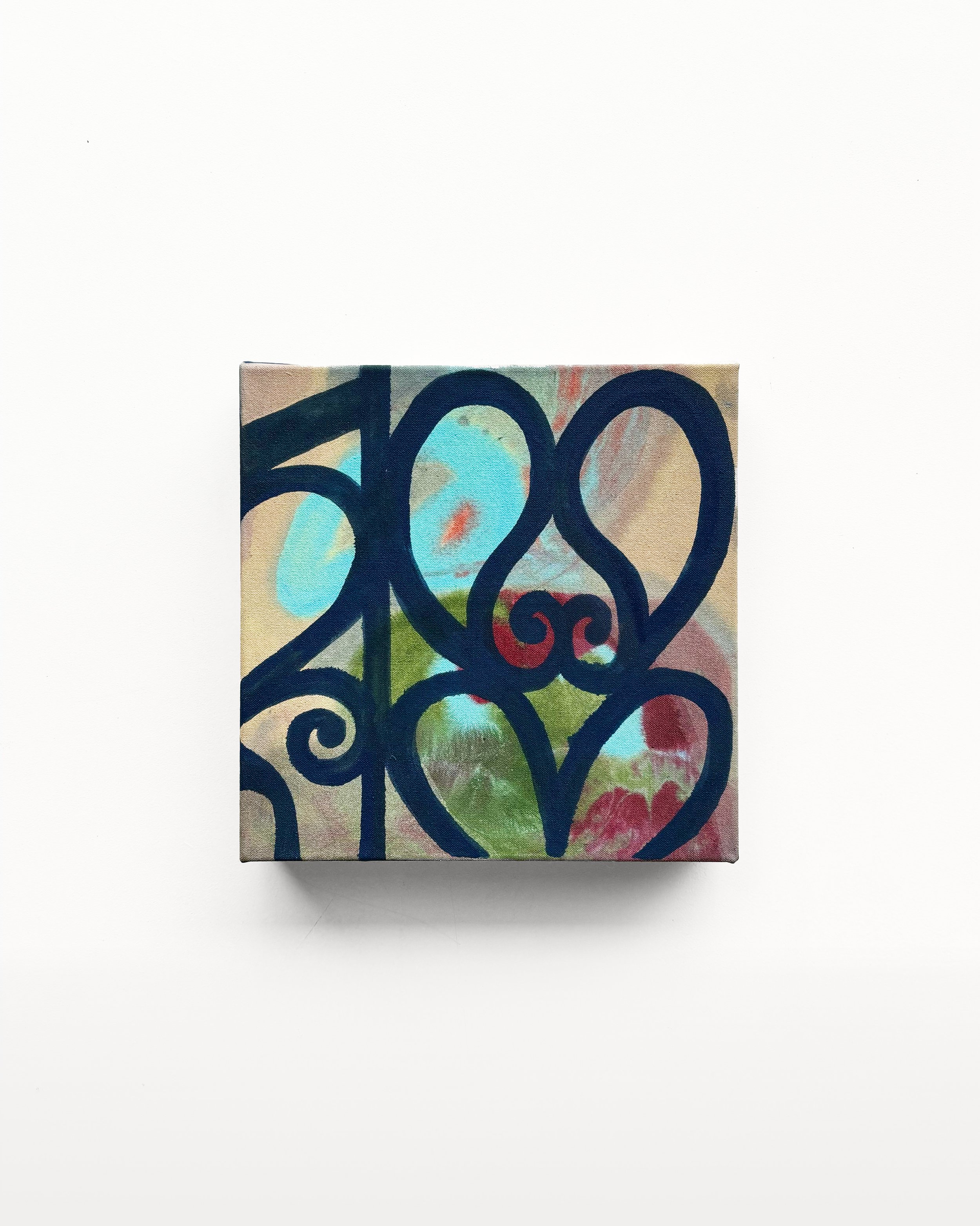
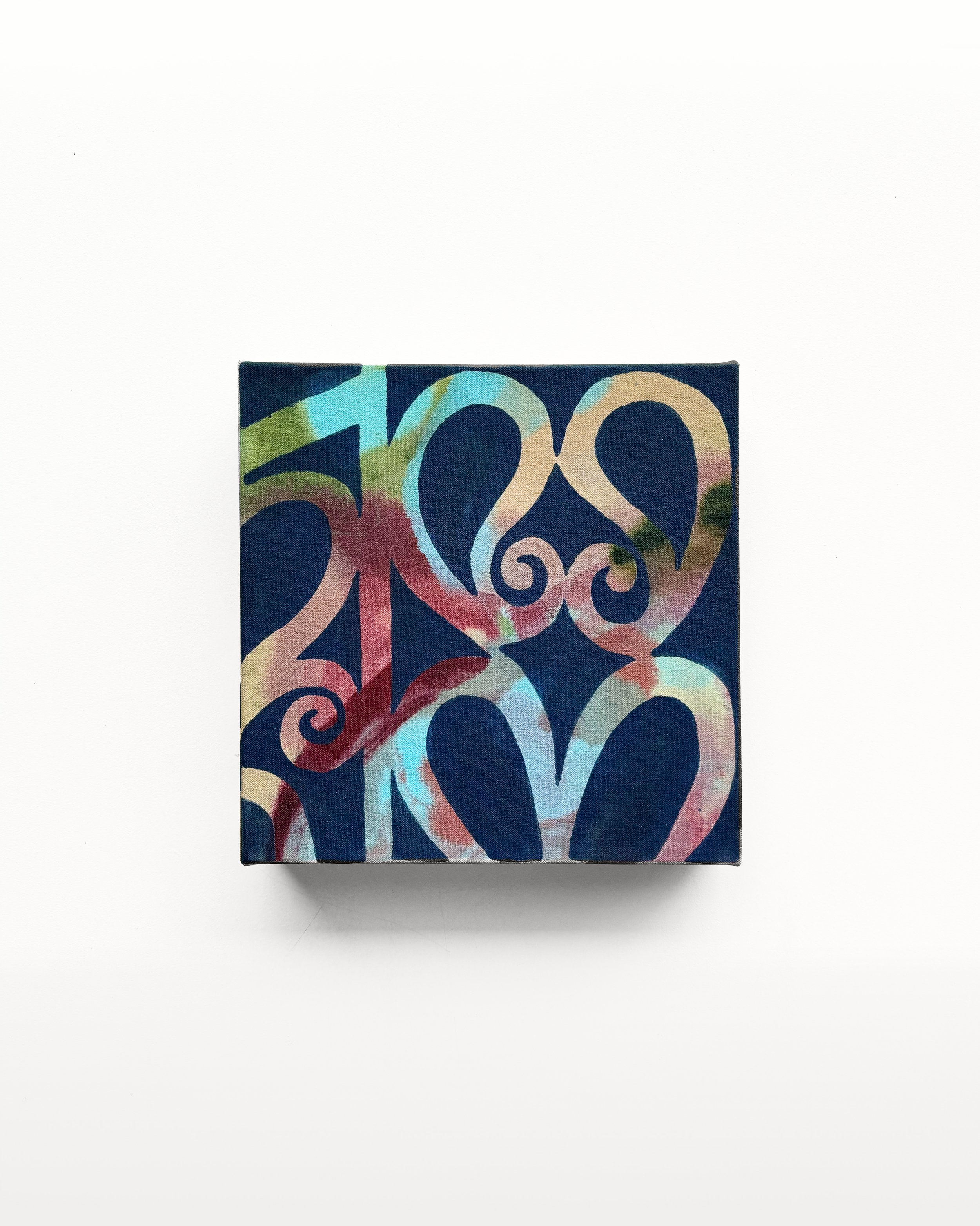
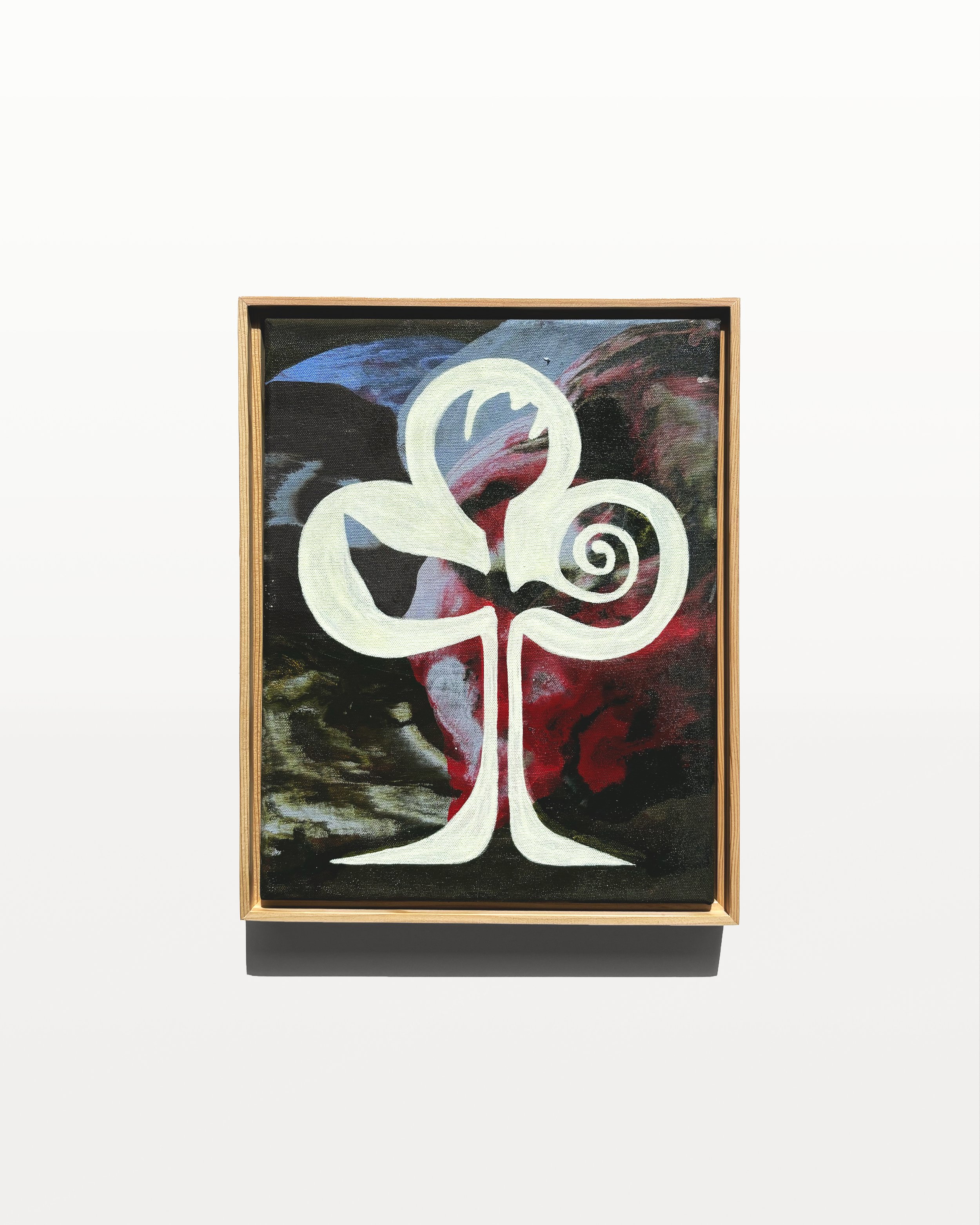

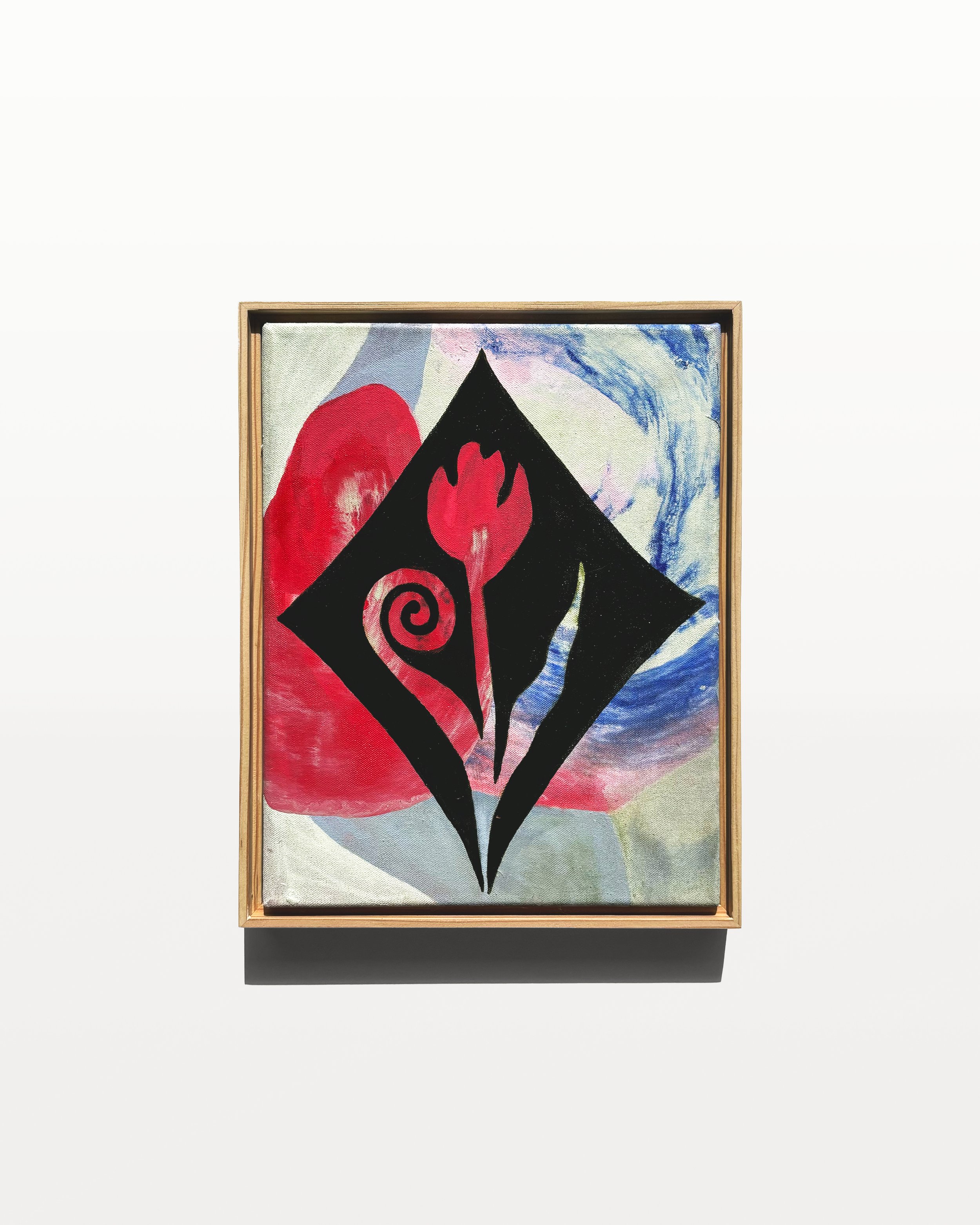
What is the role that technique plays?
Technique is still part of the product, but there are multiple factors. The story you’re trying to tell, the way it was created. What I’ve learned throughout my process of being a graphic designer and art director is that what usually feels like “technically strong” work is rooted in a concept and a story. It has a story that resonates with people.
This is something we always like to ask, but how do you find the confidence to share your art and these stories with the world?
For me, that’s constantly ebbing and flowing. One day I’m so confident and the next I’m entirely insecure, constantly comparing my work to other people, wondering if my work is ready to be out there. Something I think about is “Am I at the phase where I even should be sharing?” Everyone has a level of imposter syndrome.
How do you decide that it’s ready then? What’s the tipping point on that decision?
It just depends. There are some paintings that will flow out of me so quickly and it feels so natural. It’s a gut reaction. Those turn out the best because I know how easy the process was. And then there are ones I really struggle with, that usually have layers and layers of paint. There were two in the last show that I really struggled with. I felt a lot of pressure to get those right. Maybe it’s because I felt like I wasn’t producing enough art. But there’s a point where things start clicking and there’s a certain mood that I want each piece to give off. Once I feel like that mood is captured, then it’s right. I want them to have a duality to them in color and composition, and when that happens, it’s right.
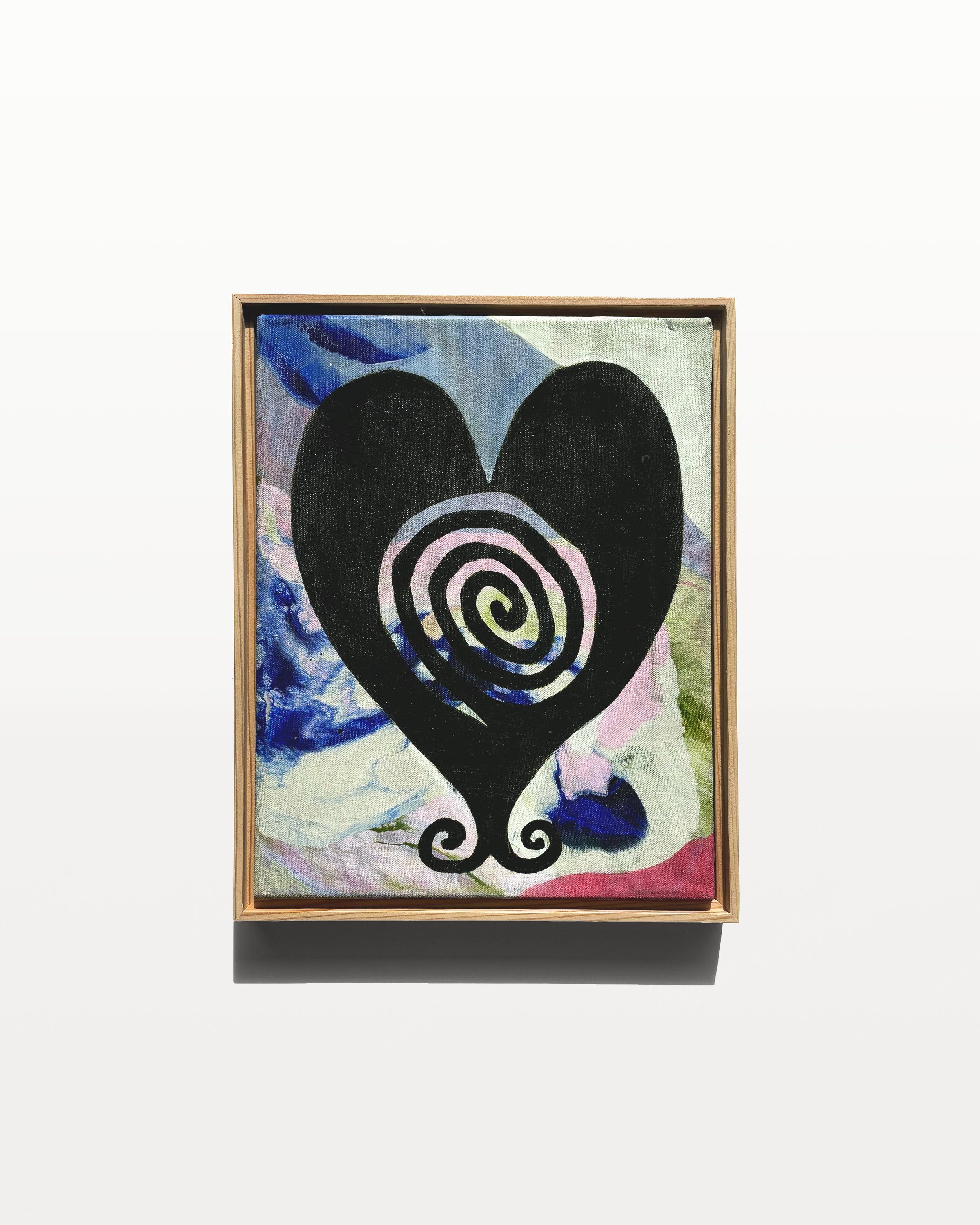

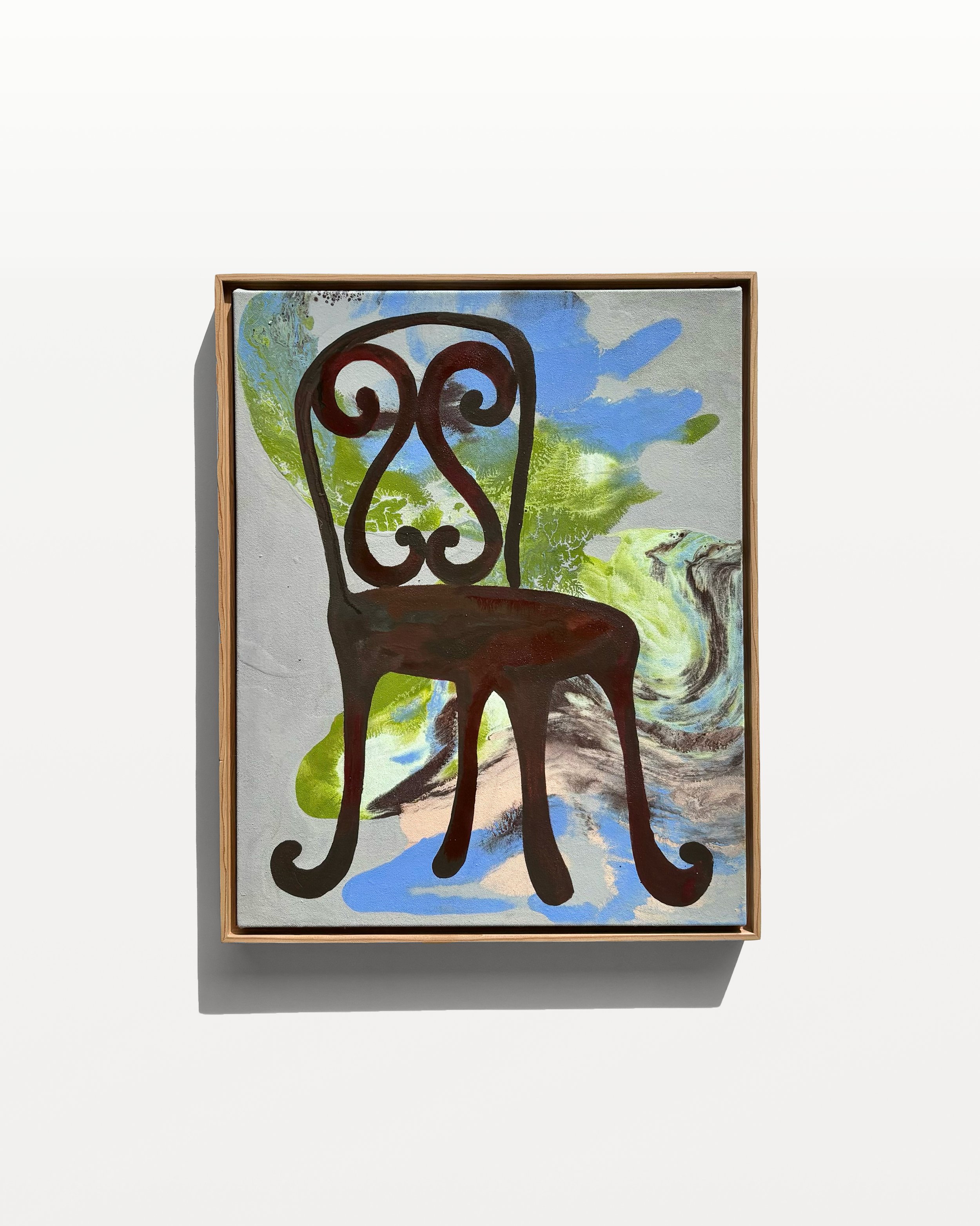
It’s more of a feeling?
It feels like a balancing act. Within my process, I’m balancing pieces of color, shapes, opacity, and creating something that covers all of that.
So much of your art is focused on shapes. It’s very definitive in that way. Where does that idea come from?
It’s a challenge. The process itself is giving up things along the way. I start with the background with watered down acrylic, and then I squeegee it which dictates the background. I know something is right when I’ve made a background that I don’t want to give up. The next step is adding something more representational or symbolic. I don’t want it to feel like lobby art. I want it to be more of a story, a piece of symbolism that someone resonates with. When that comes, I figure out what parts I love the most about the background and what parts I’m willing to give up. It’s a weird process.
How do you give up parts of things that you’ve made?
On the most recent piece, there was a corner I loved. It was the perfect composition of paint that was spread in a beautiful way. When you use watered down acrylic, it has a mind of its own. So when you create something special, it feels like it happened by nature. It all depends on what the end result is intended to be.
How do you decide on the shapes?
For this last series, I wanted to make pieces, but I wasn’t working towards anything in particular. I was just making things along the way. In the end, it wrapped up into a visual idea of a romanticism of the details of everyday life. Little things surrounding me. Like the wrought iron you see everywhere around Brooklyn. I titled that series “Wrought Evocations” — something that is reminiscent. The actual term “wrought” means work. Everything in the series is a little rougher than what I’ve normally done. The paintings I now do is more of an escape from the graphic design job I have. It’s a rejection of clean crispness and an openness to a level of imperfection.

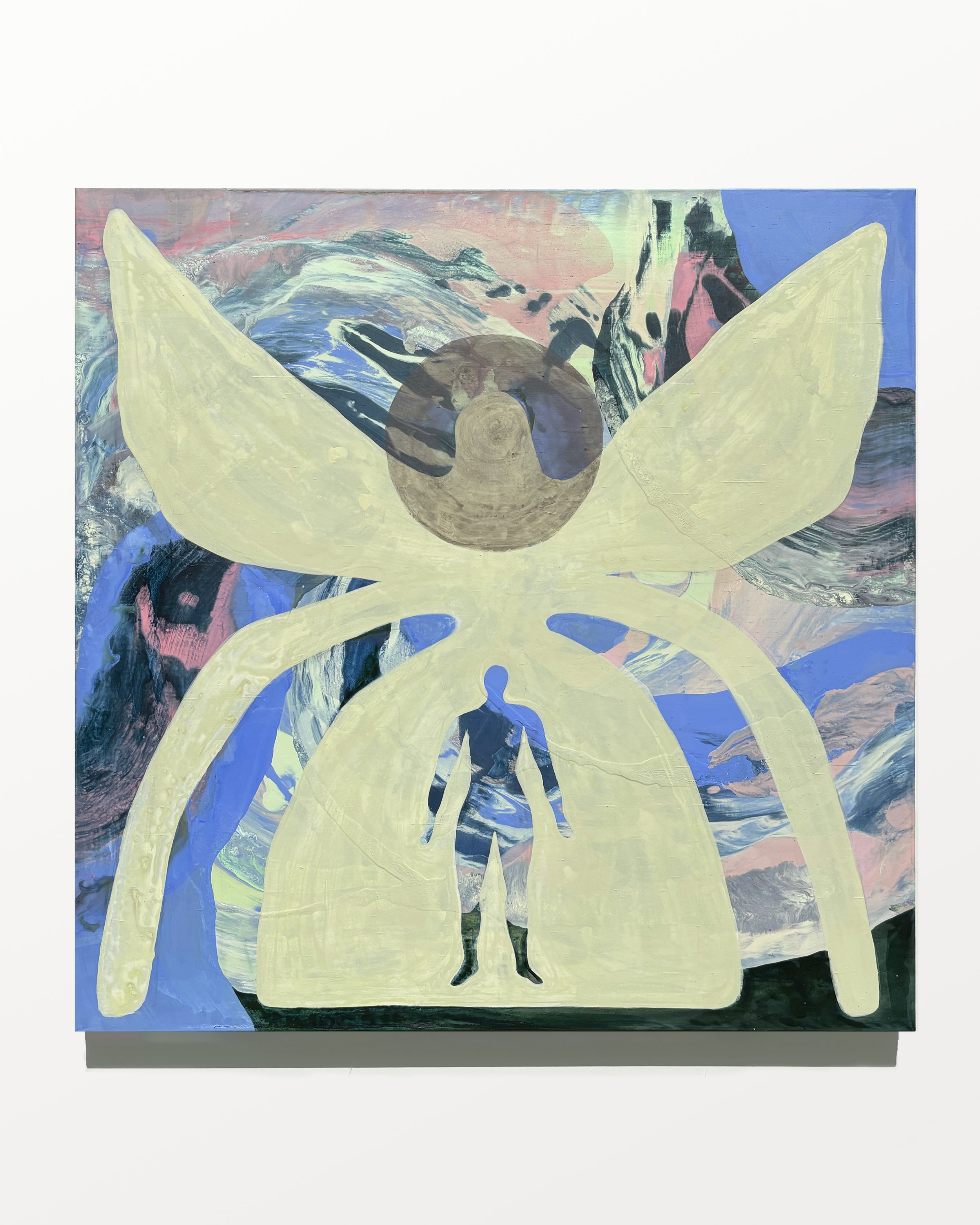
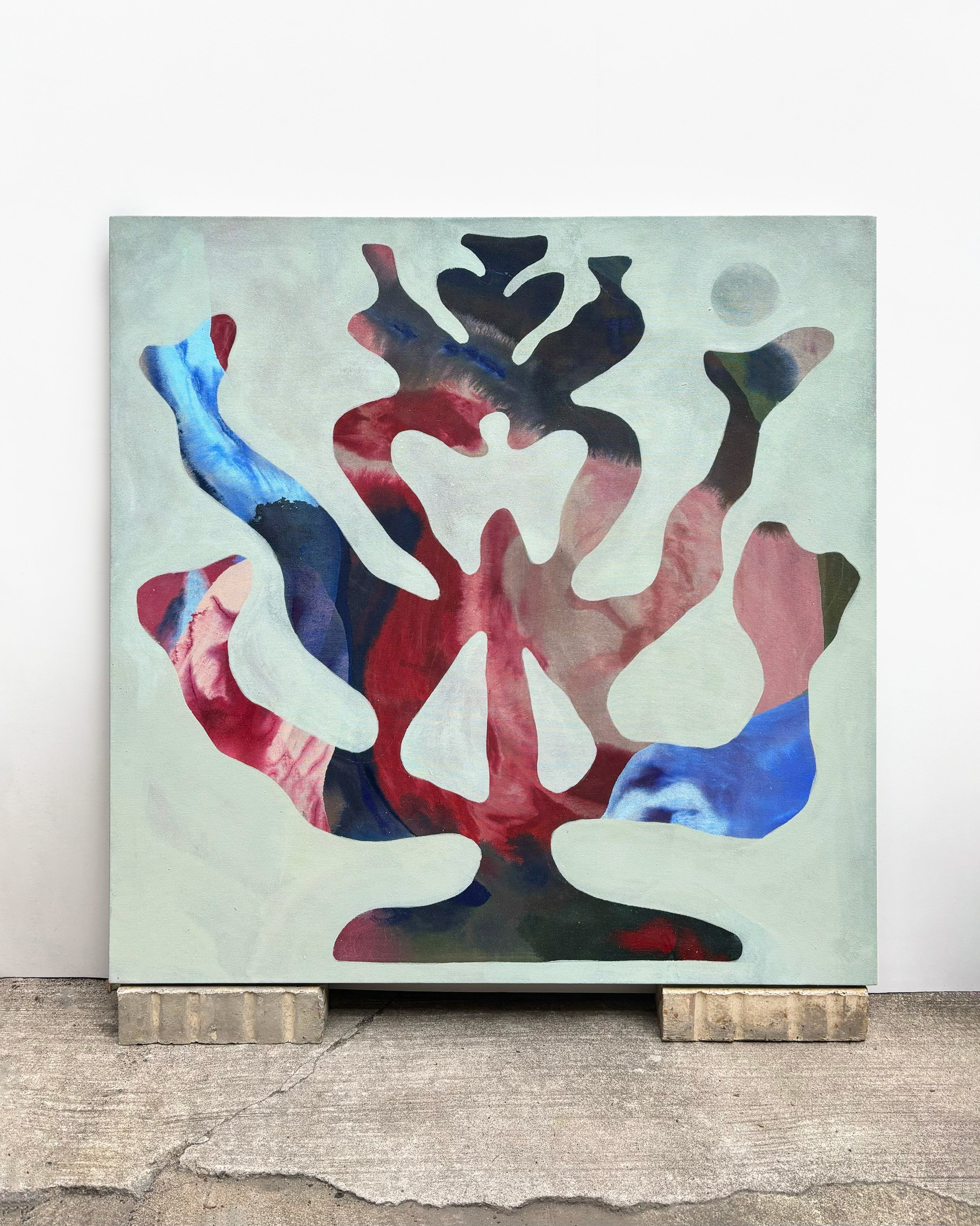
It sometimes feels like there’s more art than ever in the world right now. I know I feel it with writing. How do you release work into so much of a larger space, one that has an endless amount of artists?
It’s crazy. You can be a nihilist about everything and say “Nothing matters.” But I feel happy to create stuff and I’m sure you feel the same. I’d feel pretty empty without it. And pretty bored. I don’t think I’d know what to do with my hands. Having the constant pursuit, it’s a hobby in the simplest of terms. Everything is obviously a replication of itself at this stage of human existence, but it’s also a form of self-expression. And that’s cool. But self-expression in a way that isn’t as vain. It’s about creating things.

